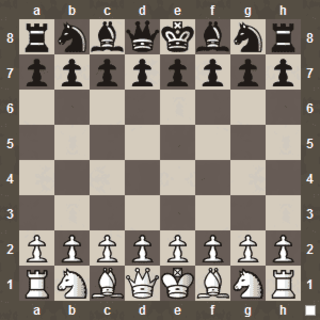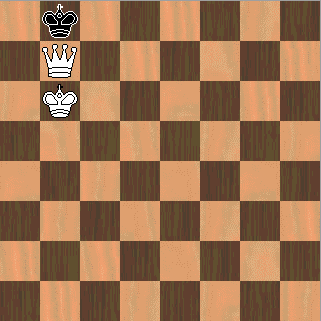chess: the basic + tactics and quick checkmates
One of the things take I love to do is playing chess. I don’t know if there is anyone out there who play chess and how good they are. So I thought I made a post about it and how the things work.
The board

This is how a chess board looks like. Most boards don’t have the numbers and letters to the side. The reason why they have it is because to write a chess play on paper so they could analyze every move they have made to learn from it for the next time. How you write it down that’s something I will tell you later.
The thing you need to know is that the queens need to stand on their color they are made of: white queen on whit area and black queen on a black one. Also the right corner at the bottom needs to be white and the player playing white always starts the game.
chess pieces
I’ll discuss this short and to the point
- The rook

This peace stand at the corners and they can move vertical or horizontal. This peace is 5 points worth.
- The Knights

This peace stands next to the rook. It moves are a bit complex comparing to the rest of the chess pieces: his move is in the form of an L. the L can be lying down or upside down or whatever, as long as it is in the form of an L. this means two steps straight and one to the side. This will makes it clear:

- The bishop

This peace stands next to the knights. It can move only diagonal and is 3 points worth just as the knight is.
- The queen

This peace stands between the bishop and the king. The queen can move vertical, horizontal and diagonal. So everything what the other pieces can except from the knights. This piece is 9 points worth.
- The king

This one is standing between the queen and the bishop. It can move to all directions, but can move one step each time. This piece has no points; some say 0 points other infinity points. The thing is if you can take this piece, you have won.
- The pawn

This stand in front of all the other pieces that we already talked about. It is worth 1point each and they move up two spaces on their first move and subsequently moving them one space at a time.
So now you know how all the pieces work and how much points they are. The points only matters if you play with not much time. So when the time is up and no one has won, you count the points. The one with the most points wins.
special moves
- Castling

Castling is when you move the rook and the king towards each other and the moment the meet; they switch places as illustrated above. You have the long castling that is the first on the picture and the short one is the second on the picture if you read from left to right. It can only be done if:
-The rook and the king haven’t move earlier
-The king isn’t currently in check, nor on his way to do the castling
-There are no pieces between the rook and the king
- En passant

This isn’t a well know phenomenon. A pawn must have just moved two squares. This move must have placed it adjacent to a pawn of the opposite color that could have captured it, had it moved one square. The opposite-color pawn moves to the place it could have captured the pawn that just moved. En passant must be performed immediately or not at all. Because it isn’t well-known this rule is mostly ignored or prohibited in tournaments.
- Pawn promotion

When you can get with your pawn to the other side of the board then you can switch the pawn for knight, bishop, rook or queen.
- Check

Check is when a piece can attack the opponent’s king. Not matter if it is the queen or just a pawn. If the king gets attacked then you have to tell your opponent this, if he haven’t seen it, by saying check.
Then you need to make sure that you move your king into safety.
- Checkmate

Checkmate is when a piece attack the opponent’s king and no matter what the opponents king does he can’t get him to safety. If that is the case, then you have won the game.
writing a chess play
Every piece has his own letter. So that if I would write a play down and give it to you, you can play it thanks to my writing. Each move starts with the number and followed by the move that white makes followed by the move of black. If a piece takes another peace then an X follows. When the king is under attack you put the symbol + behind it and when it is mate you put # behind it. This is why the numbers and letters next to the board come in handy: all pieces are standing on an area and that area is designated with the letter followed by a number. When a king does a castling it will be written down as o-o for the short one or o-o-o for a long one. If you want to write en passent up the paper, you put (ep) behind the move. It seems all complicated but I will make more sense when I give a full example of a game.

tactics
This is the guidance every big player does:
- Middle
First you try to concurs as many areas of the middle. By doing so you make it harder for the opponent to put pieces there and it helps you with the last step of the tactic.
- Developing
This means that your break your bishop, knights and queen free from the pawns so that they can help you with the last step.
- Castling
Although not everyone does this, because some people think it is a ‘lost’ move most players do this. By castling you king is into safety and both roots are facing each other, which can help to either defend the king or help with the last step.
- Attacking
This is the last step. When you put all the pieces out there and your king is safe, then it is time to win the game. Don’t forget that your opponent is trying the same thing.
quick checkmates
I’m going to show you some plays that in a few steps you can win or lose the game. I am only going to show you how it looks like, then writing the play down, because it brings now value to this post by writing it down how it is played without seeing it.
- Scholar’s mate

That is how scholar’s mate looks like. One of the easiest things to prevent this from happening is (for the example above) to move the knight from g8 to f6. This fits also in the tactic, because you try to concur the middle AND you are developing it at the same time.
- Fools mate

Make sure that you never, ever put the pawns forward as you see above. If you never do this, then you will never get fools mate. Fools mate is only for the people who don’t use the tactic to concur as many areas in the middle of the board.
I have giving you everything I know about chess and helped you on your way to make your first moves on the path to become a worthy chess player. I have given you tactics and even the quick checkmates so you have a guideline on what to do or not to do.
If you want to practice all of this with an opponent then I suggest you go to chess. com maybe we play against each other.
Until then, take care!
More chess posts on steemit. :)
<3 chess! :D
En Passant is definitely not prohibited or ignored in tournaments. En Passant is just part of the game, and you will not find a chess site or tournament that does not recognize that rule.